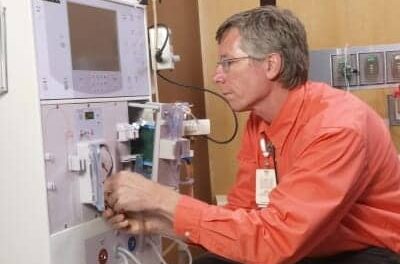Stratasys Ltd., a company offering polymer 3D printing solutions, has announced a partnership with Ricoh USA Inc. to provide point-of-care anatomic modeling services to healthcare facilities. RICOH 3D for Healthcare uses Stratasys 3D-printing technology as part of its solution to give more medical providers and hospitals access to 3D-printed, patient-specific anatomic models.
RICOH 3D for Healthcare is an end-to-end workflow designed to simplify the development, design, and production of anatomic models for healthcare providers.[1] The solution increases medical facility access to 3D-printed medical models to help clinicians see inside anatomy.
According to the company, the modeling technology offers greater visibility into patient needs, while reducing the barriers to entry that healthcare providers encounter when standing up a 3D-printing facility. These include staffing issues, training requirements, budget constraints, as well as compliance requirements for quality, IT, and HIPAA.
Ricoh uses the Stratasys J750 Digital Anatomy printer and the Stratasys J5 MediJet 3D printer to create the models produced for RICOH 3D for Healthcare. The printers create life-like anatomic models that can reflect an individual patient’s pathology and be physically manipulated like human tissue. Medical models allow clinicians to deliver more personalized care through surgical preparation and patient education and can also be used for medical training purposes.
“To date, access to anatomic models at point-of-care locations has been limited to large hospitals and healthcare facilities,” says Gary Turner, managing director for Ricoh 3D for Healthcare, Ricoh USA Inc. “Our cost-effective solution expands access for healthcare providers of all sizes. By partnering with Stratasys, through an integration with IBM Watson Health and our ongoing commitment to innovation, we are able to provide these models to any facility using IBM iConnect Access.”
RICOH 3D for Healthcare offers two different options to providers. The point-of-care option brings Stratasys 3D printers and Ricoh’s managed services staff on site to manage the entire process, aligning with Ricoh’s Quality Management System and good manufacturing practices. The on-demand option allows providers to order anatomic models to be 3D-printed and shipped to them directly. Both options are HIPAA-compliant and easy for medical staff to use.
“Through our partnership with Ricoh, we are giving healthcare institutions the opportunity to access patient care tools that they may not have previously had access to,” says Scott Drikakis, healthcare segment leader for Stratasys. “With Ricoh 3D for Healthcare, providers can easily generate 3D-printed models of patient-specific anatomy using state-of-the-art technology through an on-site managed services or on-demand part approach. This will demonstrate the clinical and economic benefits of anatomic models, while streamlining the historical challenges of establishing 3D-printing programs in hospitals.”
Featured image: RICOH 3D for Healthcare uses Stratasys 3D printing technology to provide healthcare facilities with point-of-care access to 3D-printed, patient-specific anatomic models, such as this model of a spine printed on the Stratasys J750 Digital Anatomy Printer.





